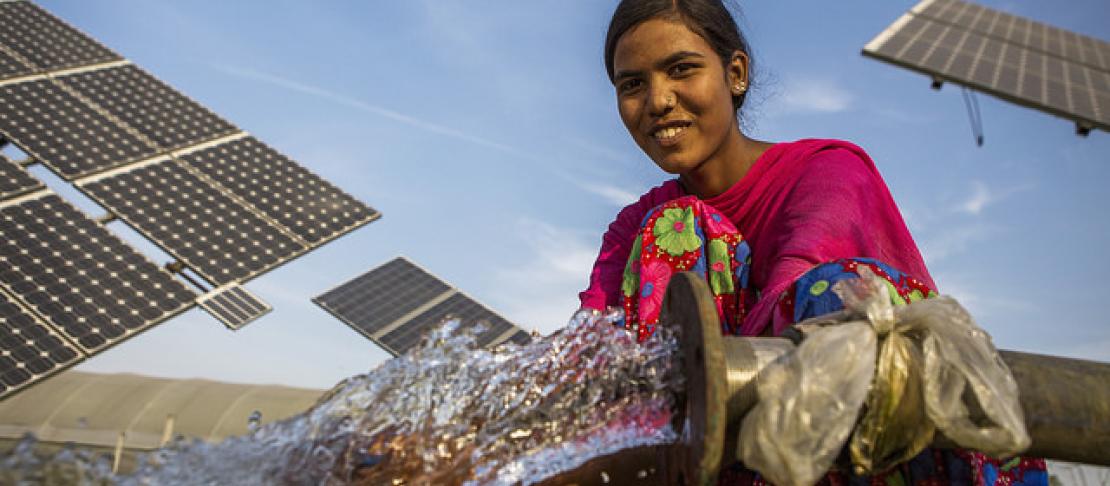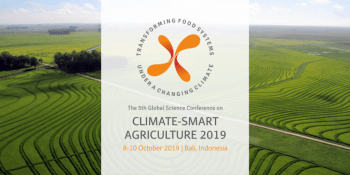How much is enough? Country mitigation targets for agriculture sector needed to meet 2 °C goal calculated for first time

BURLINGTON, VERMONT (20 Feb 2018) – Scientists have calculated, for the first time, the extent to which countries must reduce agricultural emissions to meet the climate agreement to limit warming to 2 °C in 2100.
The agriculture and land use sector comprised almost a fifth of anthropogenic emissions in 2010 and may comprise three-quarters of emissions by 2100, but its critical role in climate change is often overlooked in favor of the energy and transportation sectors.
Scientists have determined that the agriculture sector must realize a global mitigation target of 1 gigaton of carbon dioxide equivalents per year (GtCO2e yr-1) by 2030 to contribute to the 2 °C target. To meet this target, countries will need to decrease business-as-usual agricultural emissions in 2030 by an average of 10%.
An article just published in the journal Climate Policy presents different approaches for calculating country-level mitigation targets that would together meet the global 1 gigaton target for the agriculture sector.
National targets for climate change mitigation vary according to principles, approaches
Since the inception of the UN Framework Convention on Climate Change (UNFCCC) in 1992, several approaches to allocate emissions allowances or reduction targets among countries have been proposed. Approaches based on principles of equity take into consideration:
- historical responsibility for climate change;
- capability to mitigate;
- equality of emissions; and
- development needs.
Other approaches allocate mitigation targets based on the cost-effectiveness of mitigation, rather than principles of equity. And some approaches combine multiple principles or stagger countries’ participation across stages.
There are different ways of assessing contributions to the 2 °C goal. This analysis can help countries guide their ambition,” Meryl Richards, lead author and scientist at the University of Vermont’s Rubenstein School for Environment and Natural Resources and the CGIAR Research Program on Climate Change, Agriculture and Food Security, said.
Allocations to specific countries vary widely by approach.* Mitigation effort by the United States, for example, ranges from 40 megatons of carbon dioxide equivalent in an approach focusing on capability to 483 megatons in an approach assigning equal per capita emissions. India, on the other hand, would not need to mitigate agricultural emissions, in an equal per capita emissions approach.
Some countries have ambitious targets
In Nationally Determined Contributions to the UNFCCC, only some countries included specific targets for the agriculture and land use sector.
Among countries that developed agricultural mitigation targets, some countries (mostly in Africa) chose to make ambitious commitments that are in line with the 2 °C – or even the 1.5 °C – target. However, these commitments are voluntary.
If countries consistently choose the most ambitious targets from the approaches described in the paper, then global agricultural emissions would be reduced by 4.6 GtCO2e in 2030, vastly exceeding the 1 GtCO2e yr-1 target. On the other hand, if countries consistently choose minimum mitigation targets, then global agricultural emissions would actually increase 1.9 GtCO2e yr-1 above the 2030 baseline, the authors wrote.
It is extremely unlikely that we will be able to limit warming to 1.5 or 2 °C if countries do not consistently choose ambitious mitigation targets in agriculture,“ co-author Lini Wollenberg said. Wollenberg, a professor at the University of Vermont Gund Institute for Environment, leads low emissions development research for the CGIAR Research Program on Climate Change, Agriculture and Food Security.
Early, ambitious, collective action needed
Given the grand challenge of meeting a 1.5 or 2 °C warming limit, the authors suggest that countries with minimal mitigation targets increase their ambition.
The Technology Mechanism under the UNFCCC – which will also serve the Paris Agreement – can support the transfer of more advanced technologies to developing countries, including technologies that may provide adaptation benefits as well.
Developed countries can invest in new technologies, for example breeding ruminants for lower emissions, and they can provide the finance needed for developing countries to transition to low emissions agriculture.
National governments will need to work with their farmers and food companies, and each other, to pursue greenhouse gas emission reductions. Early, ambitious, and collective effort and development of new agricultural production technologies are urgently needed in the agriculture sector,” Richards said.
*The analysis was limited to methane and nitrous oxide, which make up the majority of emissions from agriculture. Sequestration of carbon in trees and soils could be other mitigation options, but high variability, lack of data, and the reversibility of carbon storage make the exact potential of such options uncertain.
Download the publication: Richards M, Wollenberg E, van Vuuren D. 2018. National contributions to climate change mitigation from agriculture: allocating a global target. Climate Policy.
___
Contact:
Julianna White | CCAFS Low Emissions Development, University of Vermont
julianna.m.white@uvm.edu | +1 802.777.7017


